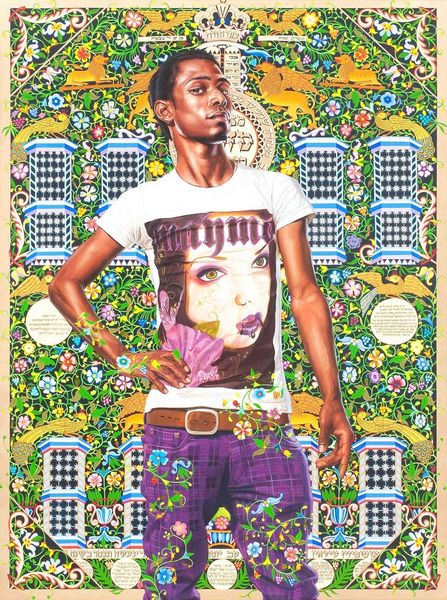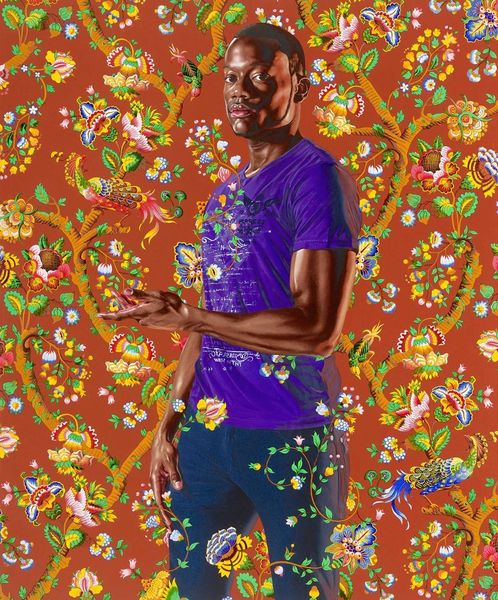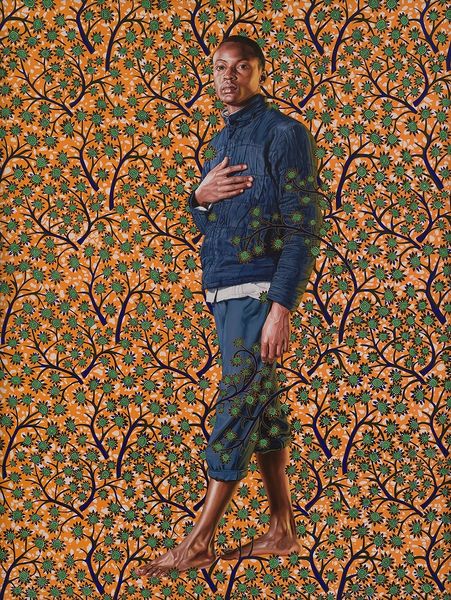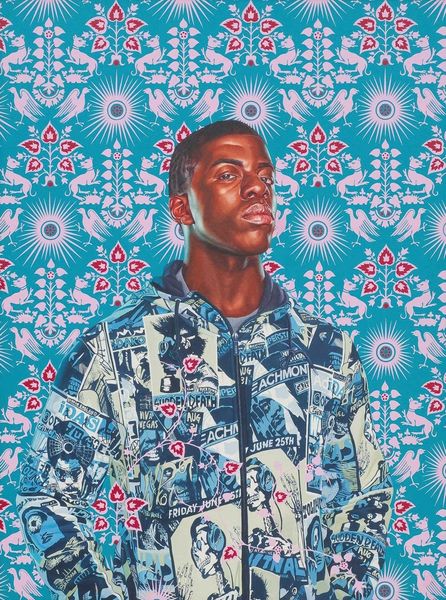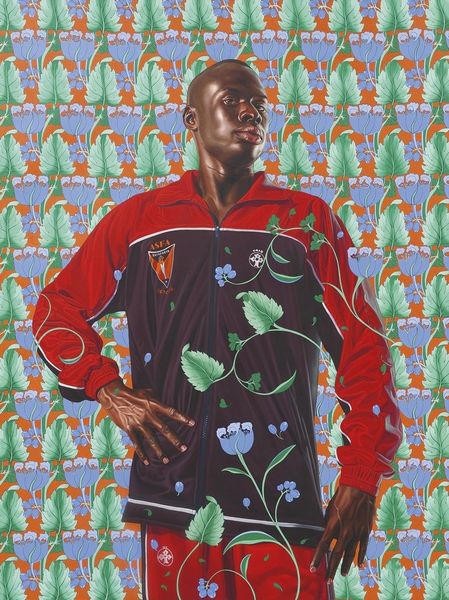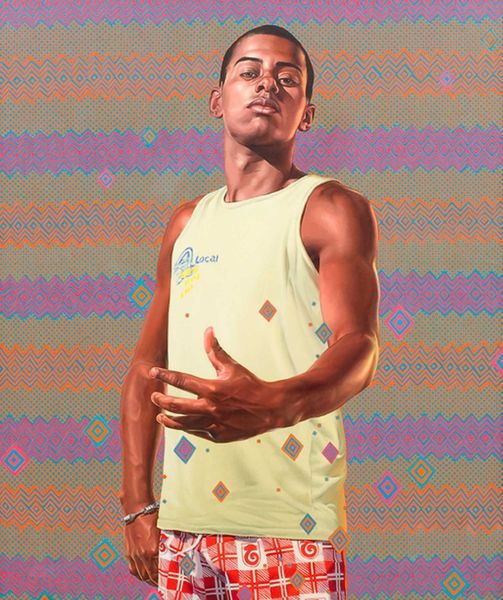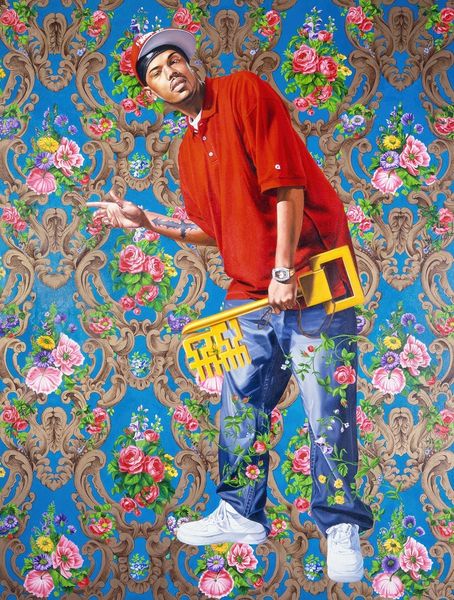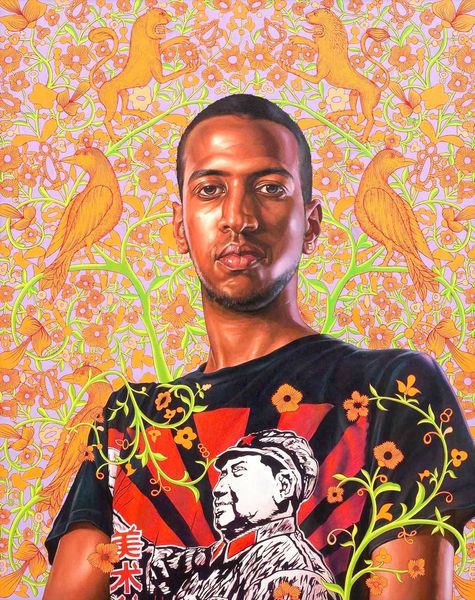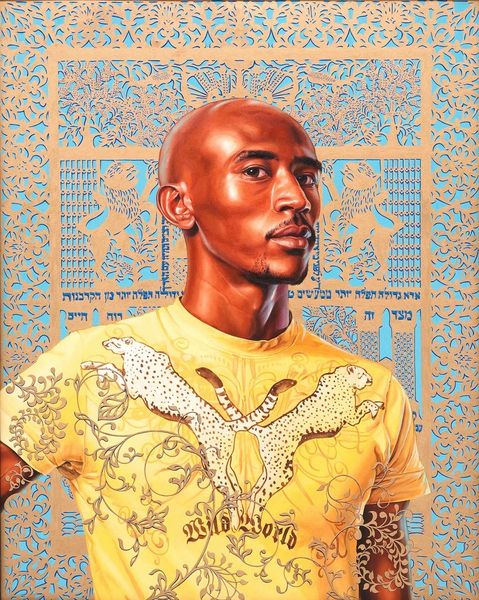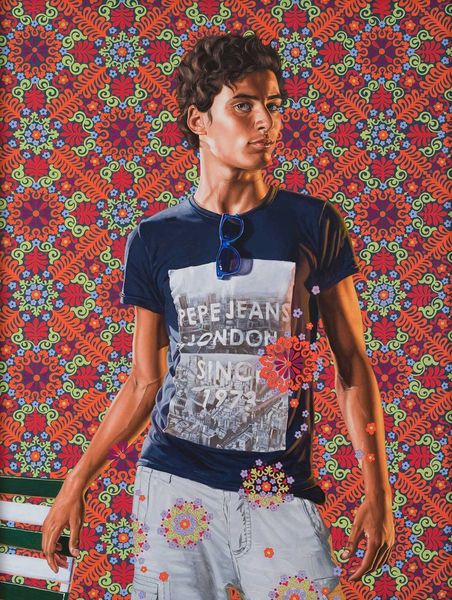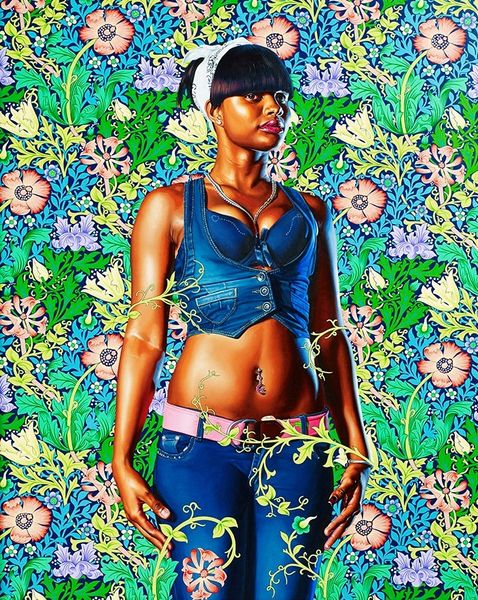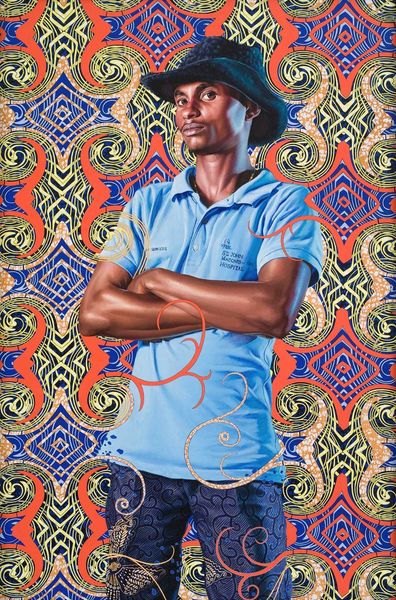
#
pattern-and-decoration
Copyright: Modern Artists: Artvee
Curator: Kehinde Wiley's 2011 acrylic painting, "Alios Itzhak", is a striking example of his fusion of contemporary portraiture with historical artistic traditions. What’s your first impression? Editor: I’m immediately drawn to the juxtaposition—the casual attire of the subject against the highly ornate, almost Byzantine-like backdrop. The contrast is so arresting; it’s both regal and relatable, somehow. Curator: Absolutely. Wiley is known for placing contemporary Black men in poses and settings traditionally reserved for European aristocracy. It raises interesting questions about power, representation, and the construction of identity. What do you see in the background imagery? Editor: It's a dense tapestry of symbolism! The lions flanking the central figure suggest strength and dominion, classic heraldic motifs. But interwoven with birds, vegetation…almost an Eden-like quality alongside the strong symbols of the zodiac. Is there a connection here? Is the subject meant to stand as a personification of certain strengths like Leo, or even something related to Judaica in reference to Itzhak? Curator: That's precisely the kind of cultural layering Wiley encourages. The floral patterns act almost like a visual echo of the subject's own "ornamentation"—notice the swirling motifs on his t-shirt and arms. The use of gold tendrils as symbolic ties between his clothing and his position in space within the history of image building and "great art." Editor: And those blues, a vibrant cobalt recurring both in the patterned background and Alios' t-shirt--the symbol of devotion! Curator: It's all carefully calibrated, isn't it? Wiley isn’t just creating a portrait; he's crafting a statement about visibility and reimagining art history's power structures, and of a different ideal within current urban landscapes. It's a powerful conversation starter. Editor: It makes you consider the very act of looking – who gets to be seen, and how? The symbolic weight in the painting invites us to unpack a lot of assumptions. Thanks to how clearly it stands against past ideals. Curator: I agree, this piece urges us to challenge existing artistic canons while prompting critical engagement with enduring symbols. Editor: Ultimately, “Alios Itzhak" resonates because it reframes what it means to inhabit positions of historical power and to examine a reframed popular visibility.
Comments
No comments
Be the first to comment and join the conversation on the ultimate creative platform.
